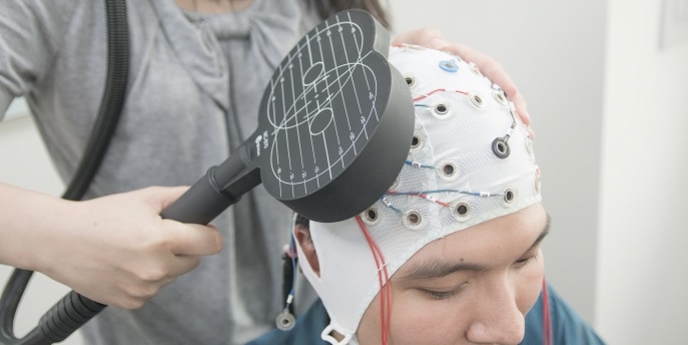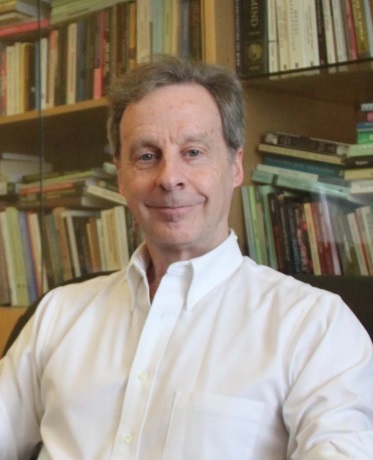Interview with Dean of the College of Humanities and Social Sciences, GIMBC Director

“For people like me, there’s two main mysteries in the world. One is look out into the sky at night. How far out does it go? How long will it continue to expand? What really happens when things get sucked into pockets of extremely powerful gravity? The other is looking inward.
Our brain, which generates our experience of the world, is locked inside of a skull. It’s cut off from the world. So how is it that we’re able to generate these cinema-like images of the world, sight and sound and all the other sensory apparatus, integrated into one unified picture?”
Creating TMU’s Neuroscience Future
You might not guess at first glance, but Dr. Tim Lane just turned 65. Perhaps his spry figure comes from days playing baseball; a dufflebag of ball gear sits in his office corner belying a spirit of good-natured competition. A competitive spirit and emphasis on results also drive Dr. Lane to create a well-rounded
educational program that brings the next generation of TMU’s neuroscience researchers and practitioners together.
Dr. Lane’s interest in mind and consciousness began at the University of Pittsburg in 1976. While studying Philosophy of Science he came across the book “The Origin of Consciousness and the Breakdown of the Bicameral Mind” by Princeton psychologist Julian Jaynes, who later became his mentor. Taken with Jaynes’ somewhat eccentric ideas, Dr. Lane wanted to approach the theory through neuroimaging studies. His work caught the attention of a visiting scholar from Taiwan which led to a position at Academia Sinica. After that, Dr. Lane worked at National Cheng Chi University and National Chung Cheng University before arriving at TMU in 2012. In 2014, he began serving as Dean of the College of Humanities and Social Sciences.
With a background that spans both philosophy and neuroscience, Dr. Lane is one of the few academics who have been published in journals as varied as The Journal of Philosophy, Analysis and Phenomenology, Phenomenology and the Cognitive Sciences, and Trends in Cognitive Science. Papers covering, psychiatric disease, rubber hand illusions, and neuroexistentialism are a reflection of the multidisciplinary approach to neuroscience that Tim is trying to bring to TMU’s College of Humanities and Social Sciences.
Research to Help Patients
“One thing that people mistake about vegetative state patients is that they think they don’t do anything. Actually, they do a lot. When they sleep, some of them dream. They have the same kind of brain waves that you would see if you were looking at a healthy person.”
Though not visibly conscious, up to 40% of patients who may have been misdiagnosed as vegetative could benefit down the line. “Dreams are an example of consciousness, so you can say vegetative state patients do have conscious states.” Dr. Lane and his team are working on distinguishing the level of
consciousness using PET and fMRI in combination to eventually predict improvement or recovery.
They’re also making progress with depression. Eye tracking, EEG, fMRI, and blood data are improving diagnoses; the research team is also in the process of developing non-invasive brain stimulation techniques to improve the moods of these patients. “I would like to start doing that [TMS], especially targeting the left dorsolateral prefrontal cortex, and see if we can elevate activity there and use that as a way of treating depression.”
Collaborations through TMU and Shuang Ho and Wanfang hospitals in radiology, psychiatry, neurology, and neurosurgery are an important part of turning this research into treatments. The University’s many other established research teams, such as Dr. Robert Chiang on brain injuries, Dr. Chaur-Jong Hu, Dr. Cheng-Yu Chen for imaging, and Dr. Yi-Hua Chen on child development, have also offered plenty of opportunities for multi-faceted collaboration.
Building the GIMBC Team
As Director of the Graduate Institute of Mind Brain and Consciousness, Dr. Lane’s strategy is to recruit up-and-coming faculty with diverse academic backgrounds, varied interests, and technical expertise. So far the GIMBC team includes Dr. Niall Duncan – philosophy and neuroscience, Dr. Changwei Wu – engineering and neural imaging, Dr. Jihwan Myung – physics, physiology, and economics, and Dr. Phillip Tseng—experimental psychology and TMS, and Dr. Tzu-Yu Hsu – EEG and cognitive neuroscience.
Hiring a young, driven faculty is not without challenges for the competitive academic. “Because they’re good and smart, they have their own opinions, and they don’t necessarily do what you want them to do.” But creating team who can produce important research in the long term is worth any minor
headaches. “I think if you care about sustainability … you try to hire people who complement one another and who can do things you can’t do.”
GIMBC Programs
The GIMBC Master’s and Ph.D. programs are practical, hands-on experiences that train students in EEG, PET, fMRI, TMS, use of animal models, computation, etc., and provide a solid foundation in experimental design and data analysis. Dr. Lane welcomes med students interested in doing research along with clinical work, engineers interested in the brain, people with backgrounds in psychology who like to work with high tech imaging tools or patients, or philosophers with a craving to know what minds are really like to apply to the Graduate Institute of Mind, Brain and Consciousness (http://gimbc.tmu.edu.tw/).
“Even if you’re just one of these people interested in fundamental questions of existence, there’s something important here [for you].”

Timothy Joseph Lane
Dean, College of Humanities and Social Sciences
Director, Brain and Consciousness Research Center
Advisor, Office of Research, Shuang Ho Hospital
https://tmu.pure.elsevier.com/en/persons/timothy-joseph-lane
For interviews or a copy of the paper, contact Office of Global Engagement via global.initiatives@tmu.edu.tw.











